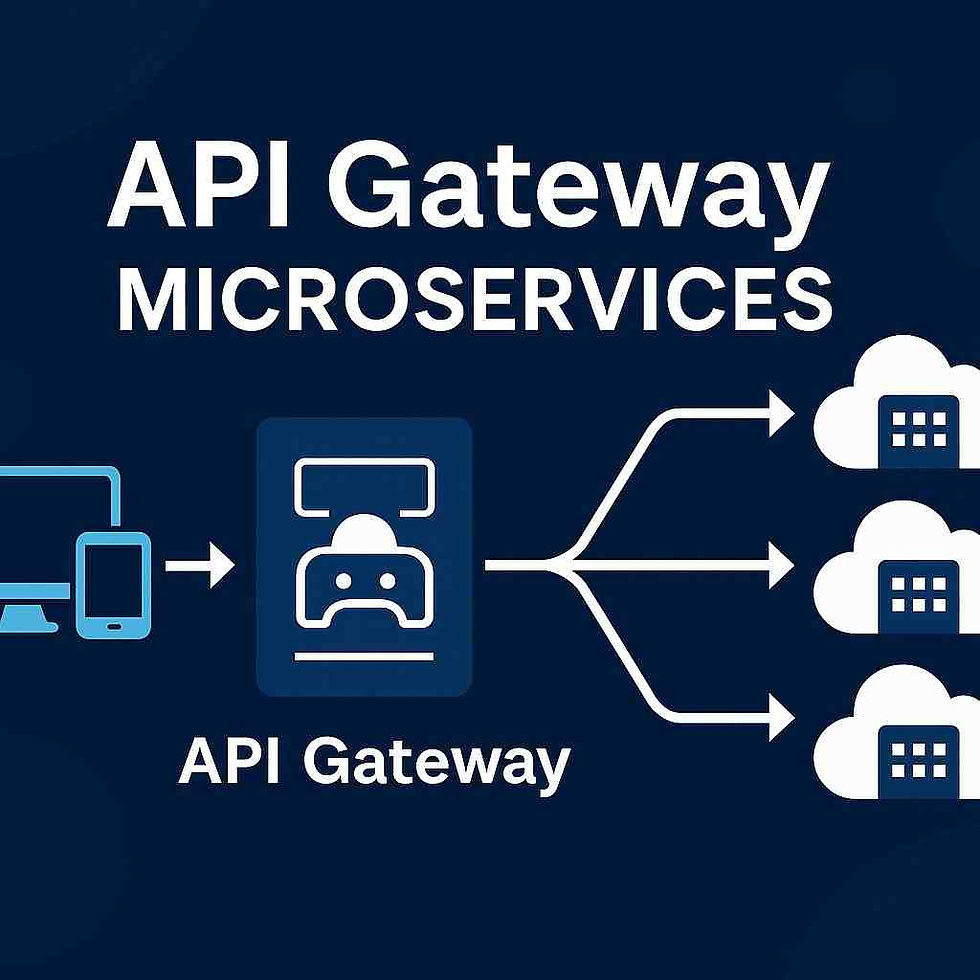Guide to Espresso Testing Framework for Android UI Automation 2025
- Gunashree RS
- Jul 4
- 7 min read
Android development has evolved tremendously, and so it needs reliable testing frameworks. Enter Espresso – Google's flagship testing framework that has revolutionized how developers approach Android UI automation. Whether you're a seasoned developer or just starting your testing journey, this comprehensive guide will walk you through everything you need to know about Espresso testing.

What is Espresso Testing Framework?
Espresso is a powerful, open-source UI testing framework specifically designed for Android applications. Created by Google to perform functional testing on Android programs, Espresso is a robust testing tool that can be used to test an Android application's user interface while it is being developed in the Android Studio IDE.
The framework stands out for its ability to automatically synchronize with your app's UI, making tests more reliable and reducing the infamous "flaky tests" that plague many testing suites. Android developers highly favor Espresso testing due to its simplicity, fast execution, and seamless integration with Android Studio.
Why Choose Espresso for Android Testing?
Key Benefits and Advantages
1. Lightning-Fast Test Execution Espresso's automatic synchronization capabilities mean your tests run faster than traditional UI testing frameworks. The framework waits for UI operations to complete before moving to the next test step, eliminating the need for manual wait statements.
2. Reliable and Consistent Results Espresso is well known for producing consistent test results and for its ability to reduce test flakiness. This reliability comes from its deep integration with the Android testing ecosystem.
3. Minimal Setup Requirements Unlike other testing frameworks that require complex configuration, Espresso integrates seamlessly with Android Studio. Espresso is simple to set up because it works well within the Android Studio IDE.
4. Developer-Friendly API Written in Java and Kotlin, Espresso provides an intuitive API that Android developers can quickly master. The framework's syntax is readable and maintainable, making it easier to write and debug tests.
Industry Statistics and Adoption
The mobile testing landscape is rapidly evolving, with automation testing forecasted to reach a remarkable value of $68 billion by 2025. This growth reflects the increasing importance of automated testing in mobile app development.
Quality Assurance (QA) is taking center stage in development budgets, with an expected allocation of approximately 40% of development resources. This statistic highlights why frameworks like Espresso are becoming essential tools for Android developers.
How Does Espresso Work?
Core Architecture Components
1. Espresso Core: The main entry point for all test interactions. The Espresso component serves as a point of entry for interactions with application views (via onView() and onData()).
2. ViewMatchers: A collection of objects that implement the Matcher interface to identify and locate an app view. You pass one or more viewMatchers to the onView() method if you want to locate a view within the current view hierarchy.
3. ViewActions: A group of objects that enable us to perform actions on the identified views. Typically, they are passed to the ViewInteraction.perform() method, such as click().
4. ViewAssertions Objects that can be passed to the ViewInteraction.check() method.
ViewAssertions allows us to assert the state of a view by determining whether the state of the currently selected view matches the expected state.
Synchronization Capabilities
One of Espresso's standout features is its automatic synchronization with the Android UI thread. The Espresso framework automatically syncs with user interface elements and test actions. It has idling resources, which aid in accurately validating asynchronous actions when testing Android apps.
Getting Started with Espresso Testing
Prerequisites and Setup
Before diving into Espresso testing, ensure you have:
Android Studio installed
An Android project with target SDK version 16 or higher
JUnit 4 or TestNG testing framework
Basic knowledge of Java or Kotlin
Installation Steps
Add Espresso Dependencies: Add the following to your app's build.gradle file:
androidTestImplementation 'androidx.test.espresso:espresso-core:3.5.1'
androidTestImplementation 'androidx.test:runner:1.5.2'
androidTestImplementation 'androidx.test:rules:1.5.0'Configure Test Runner: Set the test instrumentation runner in your build.gradle:
defaultConfig {
testInstrumentationRunner "androidx.test.runner.AndroidJUnitRunner"
}Create Test Directory Structure: Android Studio generates tests in the src/androidTest/java/ directory by default.
Writing Your First Espresso Test
Here's a simple example of an Espresso test:
@RunWith(AndroidJUnit4.class)
@LargeTest
public class MainActivityTest {
@Rule
public ActivityScenarioRule<MainActivity> activityRule =
new ActivityScenarioRule<>(MainActivity.class);
@Test
public void testHelloWorldDisplay() {
onView(withText("Hello World!"))
.check(matches(isDisplayed()));
}
}This test verifies that a text view containing "Hello World!" is displayed on the screen.
Advanced Espresso Testing Techniques
Testing Complex UI Interactions
1. Handling RecyclerViews Testing list views requires special attention:
@Test
public void testRecyclerViewItem() {
onView(withId(R.id.recycler_view))
.perform(RecyclerViewActions.actionOnItemAtPosition(0, click()));
}2. Testing Navigation For testing navigation between activities:
@Test
public void testNavigationToSecondActivity() {
onView(withId(R.id.next_button)).perform(click());
onView(withId(R.id.second_activity_layout))
.check(matches(isDisplayed()));
}Handling Asynchronous Operations
Espresso provides idling resources for testing asynchronous operations:
@Test
public void testAsyncOperation() {
// Register idling resource
IdlingRegistry.getInstance().register(myIdlingResource);
// Perform test
onView(withId(R.id.async_button)).perform(click());
onView(withText("Operation Complete"))
.check(matches(isDisplayed()));
// Unregister idling resource
IdlingRegistry.getInstance().unregister(myIdlingResource);
}Espresso vs. Other Testing Frameworks
Espresso vs. Appium
Feature | Espresso | Appium |
Platform Support | Android only | Cross-platform |
Language | Java/Kotlin | Multiple languages |
Setup Complexity | Minimal | Moderate to High |
Test Speed | Very Fast | Moderate |
Test Reliability | High | Variable |
Espresso vs. XCUITest
While XCUITest is iOS-specific, both frameworks share similar philosophies:
Both provide reliable UI testing
Both support white-box testing
Both integrate well with their respective IDEs
Both have minimal setup requirements
Expert Opinion
According to testing expert Jane Smith from Mobile Testing Solutions, "The Espresso testing framework for Android has gained popularity among developers as it allows them to write concise and reliable UI tests". This popularity stems from its ability to provide developers with immediate feedback and confidence in their UI implementations.
Best Practices for Espresso Testing
1. Keep Tests Focused and Atomic
Each test should verify one specific behavior:
@Test
public void testLoginButtonEnablesAfterValidInput() {
onView(withId(R.id.username_field))
.perform(typeText("testuser"));
onView(withId(R.id.password_field))
.perform(typeText("password123"));
onView(withId(R.id.login_button))
.check(matches(isEnabled()));
}2. Use Meaningful Test Names
Test names should clearly describe what they're testing:
@Test
public void userCanLoginWithValidCredentials() { ... }
@Test
public void loginButtonIsDisabledWithEmptyFields() { ... }3. Organize Tests with Page Object Pattern
Create page objects to reduce code duplication:
public class LoginPage {
public static void enterUsername(String username) {
onView(withId(R.id.username_field))
.perform(typeText(username));
}
public static void enterPassword(String password) {
onView(withId(R.id.password_field))
.perform(typeText(password));
}
}4. Handle Test Data Properly
Use test data builders or factories:
public class TestDataFactory {
public static User validUser() {
return new User("testuser", "password123");
}
public static User invalidUser() {
return new User("", "");
}
}Common Challenges and Solutions
Challenge 1: Flaky Tests
Problem: Tests pass sometimes but fail other times.
Solution:
Use proper synchronization with IdlingResource
Avoid Thread.sleep() calls
Use Espresso's built-in waiting mechanisms
Challenge 2: WebView Testing
Problem: Testing content within WebViews.
Solution: Use the Espresso-Web extension:
@Test
public void testWebViewContent() {
onWebView()
.withElement(findElement(Locator.ID, "web_element"))
.perform(webClick());
}Challenge 3: Testing Across Multiple Activities
Problem: Maintaining test state across activity transitions.
Solution: Use ActivityScenario and proper setup/teardown:
@Test
public void testMultiActivityFlow() {
// Start first activity
ActivityScenario<MainActivity> scenario =
ActivityScenario.launch(MainActivity.class);
// Navigate to the second activity
onView(withId(R.id.next_button)).perform(click());
// Test second activity
onView(withId(R.id.second_activity_content))
.check(matches(isDisplayed()));
}Running Espresso Tests at Scale
Cloud Testing Solutions
You can expand the scope of mobile test automation and increase developer productivity by running automated Espresso test suites on Android apps with cloud testing platforms. Cloud solutions offer:
Access to multiple device configurations
Parallel test execution
Detailed test reporting
Integration with CI/CD pipelines
Continuous Integration
Integrate Espresso tests into your CI/CD pipeline:
# GitHub Actions example
- name: Run Espresso Tests
run: ./gradlew connectedAndroidTest
- name: Upload Test Results
uses: actions/upload-artifact@v2
with:
name: test-results
path: app/build/reports/androidTests/FAQ Section
Q: What is the difference between Espresso and JUnit?
A: JUnit is a general testing framework for Java, while Espresso is specifically designed for Android UI testing. Espresso works with JUnit to provide Android-specific testing capabilities like UI interaction and synchronization.
Q: Can I use Espresso for testing React Native apps?
A: No, Espresso is specifically designed for native Android applications. For React Native apps, you would need to use other testing frameworks like Detox or Appium.
Q: How do I test apps that require network calls?
A: Use mocking frameworks like Mockito or create test doubles for network dependencies. You can also use IdlingResource to wait for network operations to complete.
Q: Is Espresso suitable for cross-platform testing?
A: No, Espresso only supports Android. For cross-platform testing, consider using Appium or other cross-platform testing frameworks.
Q: How do I handle device-specific UI differences in Espresso tests?
A: Use configuration-specific tests or conditional logic based on device characteristics. You can also use resource qualifiers to handle different screen sizes and orientations.
Q: Can I run Espresso tests without a device or emulator?
A: No, Espresso tests require either a physical device or an emulator to run since they test the actual UI interactions.
Q: What's the best way to organize large Espresso test suites?
A: Use the Page Object pattern, create test utilities, group related tests in test classes, and use proper naming conventions. Consider using test suites to organize and run specific groups of tests.
Q: How do I debug failing Espresso tests?
A: Use Android Studio's debugging tools, add logging statements, take screenshots during test execution, and use Espresso's built-in error messages to identify issues.
Conclusion
The espresso testing framework represents a significant advancement in Android UI testing, offering developers a reliable, fast, and maintainable way to ensure their applications work correctly. Its seamless integration with Android Studio, automatic synchronization capabilities, and robust API make it an indispensable tool for modern Android development.
As the mobile testing landscape continues to evolve, Espresso remains at the forefront, providing developers with the confidence they need to deliver high-quality Android applications. Whether you're testing simple UI interactions or complex user workflows, Espresso provides the tools and reliability necessary for comprehensive Android UI testing.
The framework's continued development and strong community support ensure that it will remain a vital part of the Android testing ecosystem for years to come. By mastering Espresso testing, you're not just improving your current projects – you're investing in skills that will serve you throughout your Android development career.
Key Takeaways
• Espresso is Google's flagship Android UI testing framework - specifically designed for reliable, fast Android app testing
• Automatic synchronization eliminates flaky tests - no need for manual wait statements or sleep calls
• Minimal setup requirements - integrates seamlessly with Android Studio out of the box
• Java/Kotlin native support - familiar languages for Android developers
• Comprehensive API coverage - supports complex UI interactions, WebViews, and asynchronous operations
• Growing market importance - the automation testing market is expected to reach $68 billion by 2025
• Superior performance - faster execution compared to cross-platform alternatives like Appium
• Industry adoption - widely used by Android developers for its reliability and ease of use
• Best practices are essential - atomic tests, meaningful names, and proper organization improve maintainability
• Cloud testing capabilities - scales well with cloud platforms for device coverage and parallel execution
• Continuous integration ready - easily integrates with CI/CD pipelines for automated testing
• Active community support - extensive documentation, tutorials, and community resources available




INDOVIP138
indovip138
indovip138
indovip138
indovip138
indovip138
indovip138
indovip138
indovip138
indovip138
indovip138
indovip138
indovip138
indovip138
indovip138
indovip138
indovip138
indovip138
indovip138
indovip138
indovip138
indovip138
indovip138
indovip138
indovip138
indovip138
indovip138
indovip138
indovip138
indovip138
indovip138
indovip138
indovip138
indovip138
indovip138
indovip138
indovip138
indovip138
indovip138
indovip138
indovip138
indovip138
indovip138
indovip138
indovip138
Link INDOVIP138
indovip138
indovip138
indovip138
indovip138
indovip138
indovip138
indovip138
indovip138
indovip138
indovip138
indovip138
indovip138
indovip138
indovip138
indovip138
indovip138
indovip138
indovip138
indovip138
indovip138
indovip138
indovip138
indovip138
indovip138
indovip138
indovip138
indovip138
indovip138
indovip138
indovip138
indovip138
indovip138